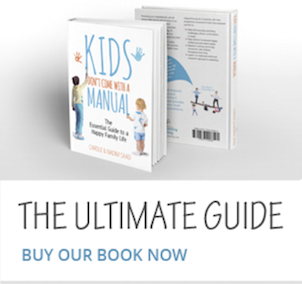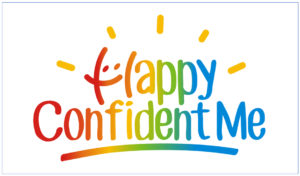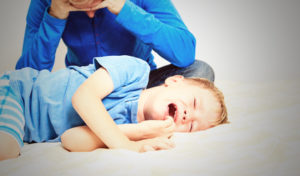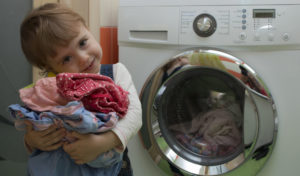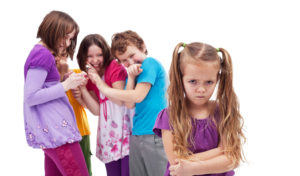Although our children need, and often crave, clear limits as we have explained in Setting Rules, they also have a tendency to break the rules, as it is natural for them to ‘test the limits’. When this happens, many parents are tempted to resort to punishment in order to change their child’s behaviour and to ‘teach’ them a lesson. Unfortunately, punishing children, particularly our own, is usually counterproductive.
There is a lot of evidence that punishment rarely works as an inducement to behave in a more responsible fashion. Moreover, there are many drawbacks to punitive consequences, especially when the punisher uses physical force or shames their child in order to get the message across. Evidence shows that children who are regularly punished will turn to using lies as a means of avoiding punishment in future – driving their behaviour ‘underground’, and children who are spanked can become increasingly aggressive themselves[i].
Conventional punishment usually puts the parent in the active role and the child in the passive, which can often make the child see themselves as the victim of something that is being done to them by their parent. Consequently, children often feel resentful after being punished as in, “I’m really annoyed with Daddy because he’s stopped me from playing with the iPad for a week” which, while being an understandable reaction, is hardly likely to motivate the child to be ‘good’.
As the psychologist and author Laura Markham explains[ii]: ‘Punishment cheats children out of the help they need to manage their emotions. It adds an overlay of shame and guilt that will only make them act worse. It models acting from fear instead of acting from love. It models using force instead of compassion. It models hurting another instead of managing our own emotions.’
That being said, we believe that it is essential for children to be accountable for their own actions and to experience the consequence of their choices, which brings us to the question of how to encourage children to be accountable without using punishment?
First we have to bear in mind that when our children ‘misbehave’, it usually means that rather than being ‘naughty’ for the sake of it, they are just trying to get our attention (even if it is negative attention), or using it to gain more control over their lives. For a child, gaining both attention and control is a means of increasing their sense of belonging and ‘significance’ (see Understanding why our children ‘mis’behave in Introduction). So when seeking to address children’s ‘mis’behaviour, it is really important to first try to connect with them by using empathy (see tool Empathy and Validation).
Once we have given them empathy, we can make them experience the ‘logical’ or ‘immediate’ consequence of their poor choice of behaviour in order to learn from it (as they would in real life). But the real key to implementing successful ‘consequences’, and to differentiate them from punishments, is to make sure that our children do not feel shamed by the experience. So, focus on the child’s poor choice rather than labelling the child himself or herself as ‘bad’ or ‘naughty’. It is also important to address the present and not the past and to avoid issuing lectures, reminders and guilt trips. Indeed, the idea is to deliver the consequence with as much empathy as possible, minimise the number of words we use and to avoid at all costs; “I told you so”, anger or sarcasm. See real-life example below.
Why this works:
The evidence shows that when children experience punishment for a misbehaviour, their attention turns away from a desire to be ‘good’ and towards avoiding experiencing the punishment again in the future. In other words, rather than wanting to becoming more self-disciplined and obedient, they focus on making sure that their misbehaviour is hidden from their parent’s view.
Children react much better if our reaction to their poor choice of behaviour begins with an expression of empathy towards their having made this decision. We can then follow this with a ‘logical’ consequence, one that does not include blame or shame and follows the three R’s rule (see Related, Respectful, Reasonable outlined below).
When we show empathy and respect for our children, shifting our focus away from the child and towards the child’s choice, they feel much more willing to take responsibility for their future behaviour. So for example, the child will now think “When I decide to break the rules, it makes everyone unhappy, so I’m better off respecting them from now on”. Far better for a child to feel empowered into wanting to change, than backed into a corner and ready to lash out again.
How to use Logical Consequences:
- A clear limit and expectation must be set before delivering a consequence (see tool Setting Rules)
- Give empathy first and then deliver the consequence:
- Example: Say “This is sad”, and then deliver the consequence. So, instead of “I told you five times to clean your room and you haven’t, so I’m not going to take you to the park!”, try “It’s really sad, it seems that you’re going to have to stay at home to clean your room.”
- The most ‘appropriate’ consequence for children making a mess or breaking something is to clean it up themselves (we would always advocate children cleaning up their own mess from the age of two) or paying (at least partly) for something that they break (if they receive an allowance).
- Appropriate consequences are distinct from punishment because they:
- Follow the three R’s rule: they need to be Related (to the ‘mistake’ the child has made), Respectful and Reasonable.
- Are delivered with love and without anger.
- Fit the misbehaviour.
- Focus on the poor choice and not on the ‘bad child’.
- Address the present not the past.
- Are not accompanied by lectures, reminders or a ‘guilt trip’.
- Teach your child wisdom by allowing their decision to be the ‘bad guy’.
- Refrain from giving lots of explanations – the more justifications you give for making a particular decision, the more opportunities your child has for arguing with them.
- Once you have delivered the consequence, you need to ‘Stick to your guns’, unless you realise that your consequence did not follow the three R’s. If this is the case, then don’t hesitate to explain to your child that you made a mistake in the heat of the moment and will think of a more appropriate consequence.
Real Life Example:
At the age of four our daughter Noor, kept leaving the meal table before she had finished eating, assuming that she could return to her food whenever she liked. We tried reasoning with her, explaining to her “We’d really like you to stay at the table so that we can all have breakfast/lunch/supper together”, threatening her with all sorts of punishments if she didn’t stay put. But to no avail, for off she drifted once more. So we decided to try something different by setting a new rule (see tool Setting Rules) and told Noor: ”Children who want to eat need to remain seated at the table”, so that she could fully understand the terms of the mealtime. The next time she upped and left without permission, we took her plate and placemat away.
On her return she was inconsolable, but instead of giving in and allowing her to resume eating, which would have made the rule null and void, we held our ground, offering her empathy (rather than ‘I told you so’s’) for her distress, but not returning her missing food. Having understood the consequences of breaking a rule, Noor now remains at the table until she has finished the meal and signals that she has finished by removing her plate herself. In the rare cases where she does get up before finishing, we just need to ask her: “Have you finished your meal?” and if she hasn’t, she smiles knowingly and sits back down without argument.
Of course it may seem hard, even painful, to stand your ground the first time your child breaks a rule, particularly if they are distressed. But provided that the consequence is logical, as opposed to disproportionate or unrelated to the transgression, and respectfully applied, the short-term pain is soon alleviated by the long-term effectiveness of the learning.
[i] MacKenzie, Michael J. and Nicklas, Eric and Waldfogel, Jane and Brooks-Gunn, Jeanne, Spanking and Child Development Across the First Decade of Life, 2013
[ii] Markham, Laura, Aha Parenting, URL: http://www.ahaparenting.com/parenting-tools/positive-discipline/Consequences_Punishment
This is an excerpt from our book ‘Kids Don’t Come With a Manual – The Essential Guide to a Happy Family Life‘, which is now available to buy or download on Amazon.
































